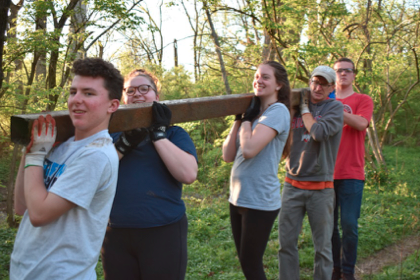
2019, Union Colony, Greeley, Colorado, USA
Jessica Mora
Emerald ash borer is an invasive species in Colorado and is known to kill ash trees. These invasive species were detected in Boulder, Colorado in 2013 and are expected to spread to Greeley threatening 15,000 native trees. Jessica’s goal was to educate the public about these invasive species and what they could do to improve their watershed. She also encouraged the public to plant native trees. Jessica designed tri-fold boards that were put on display at the elementary and preparatory school. She also presented to Union Colony forestry class on this topic. She then designed a pamphlet that explained what a watershed is, the emerald ash borer issue, and what everyone can do to help. Over 200 pamphlets were passed out across Greeley. This pamphlet also included a drawing that residents could enter for a chance to win a free tree to plant in their yard. Jessica did an amazing job drawing awareness to this topic by posting on Facebook and wrappin ash trees with ribbons. Jessica didn’t stop there. She also attended Greeley’s Arbor day and planted a crab-apple tree in Lincoln Park and distributed ten other trees to residents that had entered the drawing. These trees will help make up for the inevitable loss of ash trees in our community.













